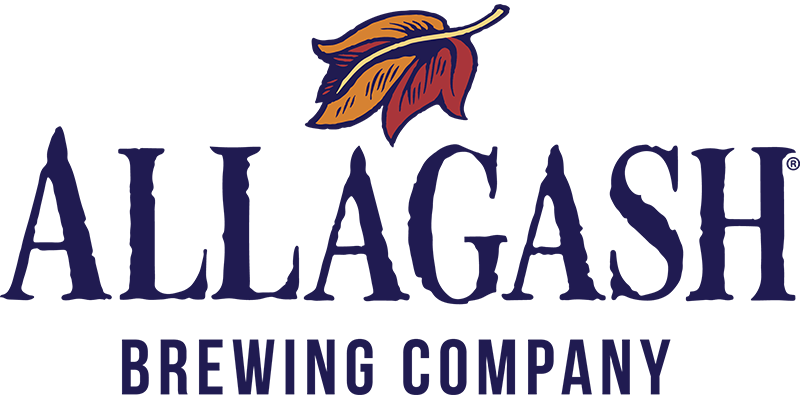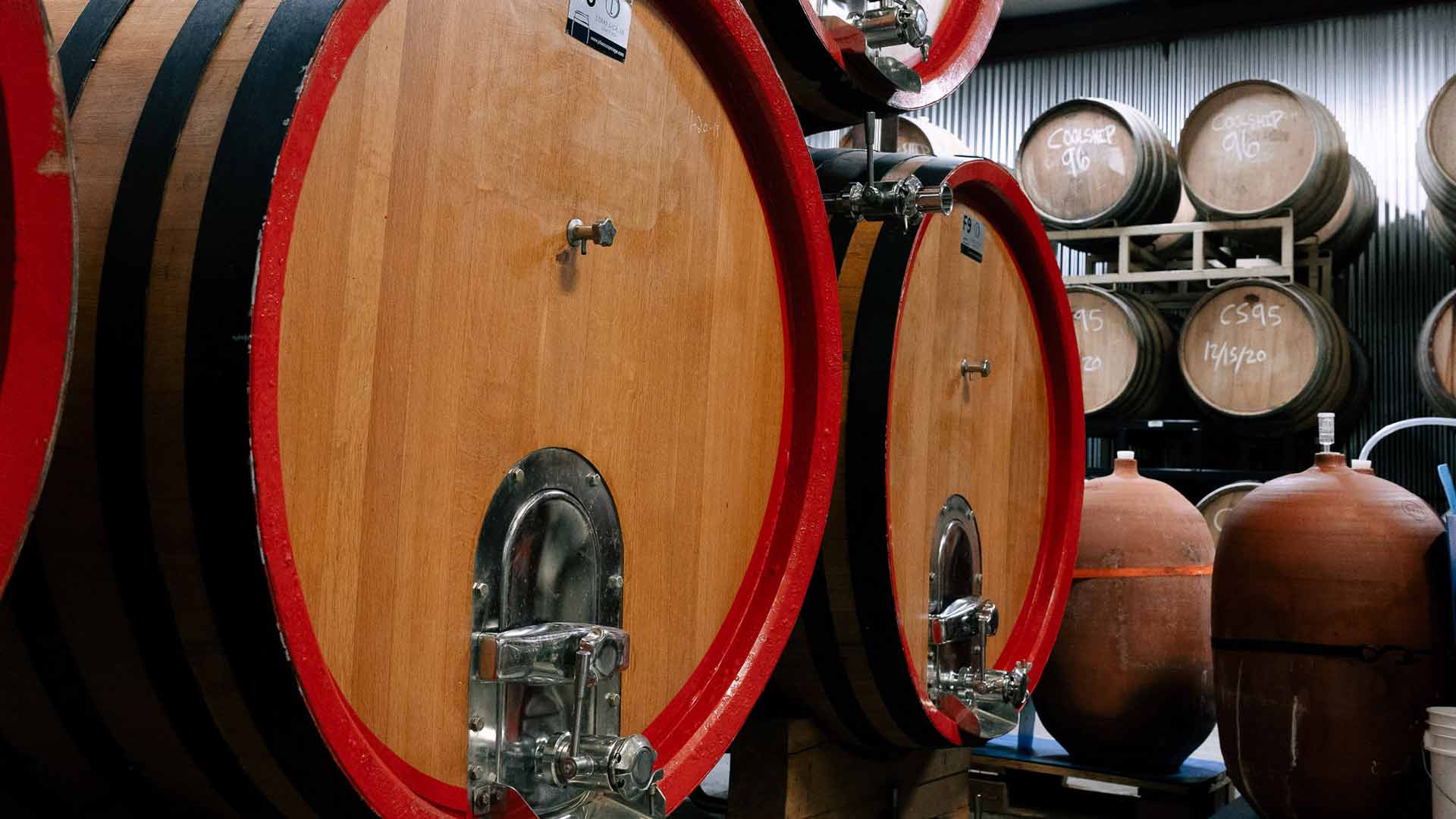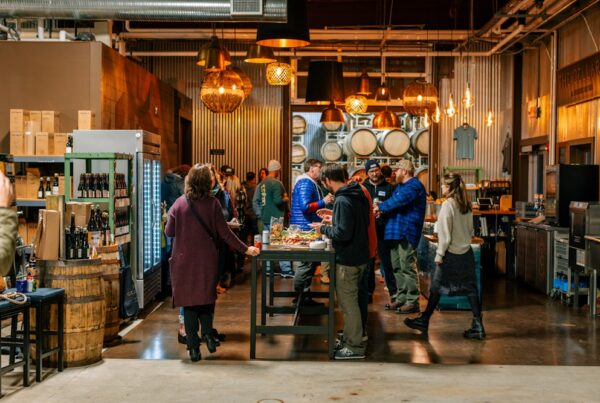There are a variety of ways to get sour flavor into a beer—and an almost endless variety of beers that you can add sourness to. To be clear, we’re honestly not the hugest fans of the term “sour beer.” For us, sour is a flavor descriptor and not a beer style. Sour beers can be dark, fruity, light, heavy, anything really. But that doesn’t answer the question: how do you make a beer sour?
In pretty much all sour beers, you’ll find lactobacillus, pediococcus, or both. Both are souring bacteria that each add a different layer of sourness to the beer. How those two bacteria, or just one of them, make their way into the beer is what differentiates one sour beer from another.
At Allagash, there are four main ways that we give our beer that sour flavor profile.
Add Souring Bacteria
The most direct route for us is adding these two bacteria to our beer manually. You’ll recognize lactobacillus as the same bacteria that gives yogurt its tartness. Pediococcus serves to add another layer of tartness and flavor. While yeast produces alcohol and carbonation, lactobacillus and pediococcus produce acid, creating tartness. There are a couple ways of adding these two organisms to your beer. 1: you can add a culture of lactobacillus and pediococcus to the beer. 2: You can add a portion of “old” beer that already contains these two bacteria. That small portion of beer will serve to create acidity in a new batch.
Put the beer in a barrel
But not just any barrel. You’ll need a barrel that previously held a tart beer. An unused oak barrel, a wine barrel, or barrels that once held spirits like bourbon or rum aren’t going to magically turn the beer sour. What happens in a barrel that previously held sour beer is that the souring bacteria (lactobacillus and pediococcus) actually finds a home in the barrel’s wooden staves. Even after cleaning out an emptied barrel (as we do for all the barrels we plan to re-use) that souring microbiota goes on living deep in the wood. Thus, the next beer that goes into the barrel will eventually come in contact with that bacteria, which will then make that new beer sour.
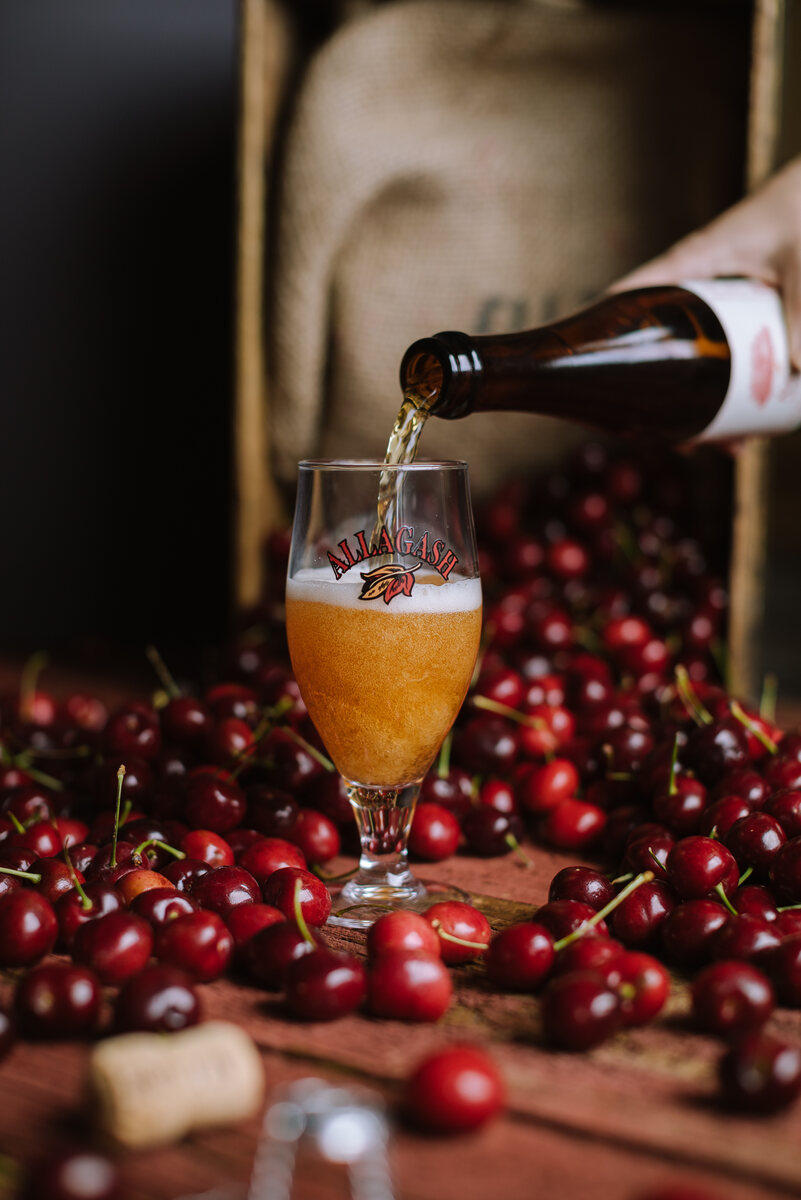
Add fresh fruit
The key here is that we have to add actual fresh fruit. Souring bacteria like lactobacillus and pediococcus naturally live on the skin of fresh fruit. So we can take a non-tart beer and just by adding, for example, fresh cherries to it we’ll eventually have a tart beer. The added bonus to this method is that you’re getting fresh fruit flavor in your beer as well! We use peaches, cherries, blueberries, raspberries, and more in our beer.
Spontaneously ferment it
Think of this as the “sourdough” method of brewing beer. Instead of physically adding yeast or bacteria to beer, we send the unfermented beer (known as “wort”) out into an open vessel called a cool
ship. In that vessel, the wort is introduced to all the microbiota floating in the air. After spending an evening outside, the beer is put into oak barrels where that melange of microorganisms gets to work, adding tartness to the beer while also fermenting it. This method adds a whole spectrum of interesting flavor to the finished beer. Spontaneous fermentation can take up to three years, leading to complex and subtle flavors that can’t be recreated with any other brewing methods.
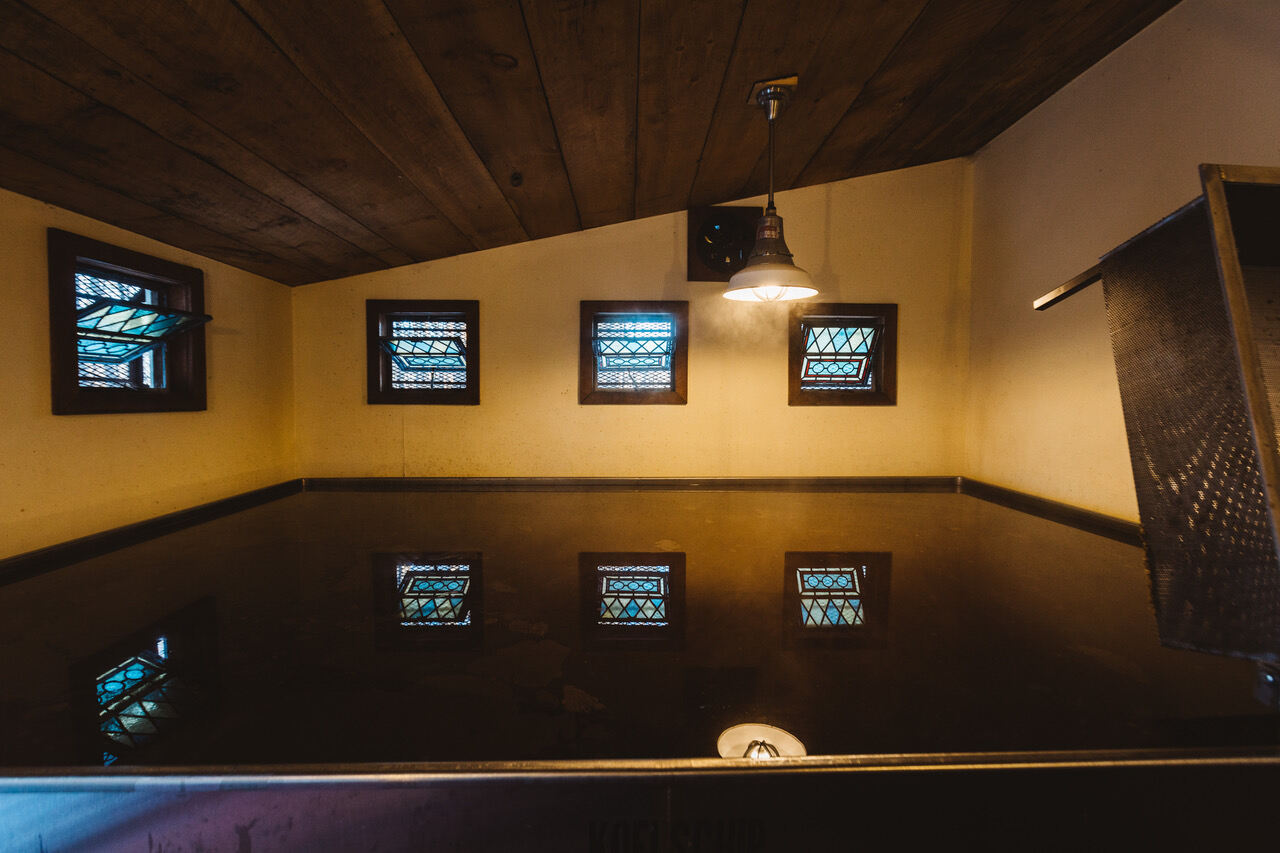
What about kettle souring?
You may have heard the term “kettle souring.” That’s not something we actually do at Allagash. In a kettle-soured beer, the brewer adds the lactobacillus before fermentation. More specifically, they add it while the beer is in a brewing vessel called the “kettle.” Thus the name “Kettle Souring.” By adding the bacteria at that point, the brewer is able to sour the beer in a matter of hours rather than months.
What you’re not able to get with kettle souring are many of the subtle and complex flavors beyond just tartness. In a kettle-soured beer, you’ll find a simpler, one-note acidity. Like everything else in brewing, neither method is “better” than the other. It simply comes down to what the brewer is looking for in their beer. If they want that clean kettle-sour tartness for a gose, they can go right ahead. If they want something more complex, then they have barrels, fruit, spontaneous fermentation, and more at their disposal!
One more note on souring, and this concerns a method that we think of as a bit too much of a shortcut. You can take a non-sour beer and just literally add food-grade lactic acid from a chemical drum. We’d never do that, nor would we ever recommend it, but it certainly happens in the beer world.
If you want to be on the lookout for a sour beer to try, here are some accessible and readily available styles.
Popular Sour Beer Styles
- Flanders Red
- Oud Bruin
- Gose
- Lambic
- Berliner Weisse
- American Wild Ale
